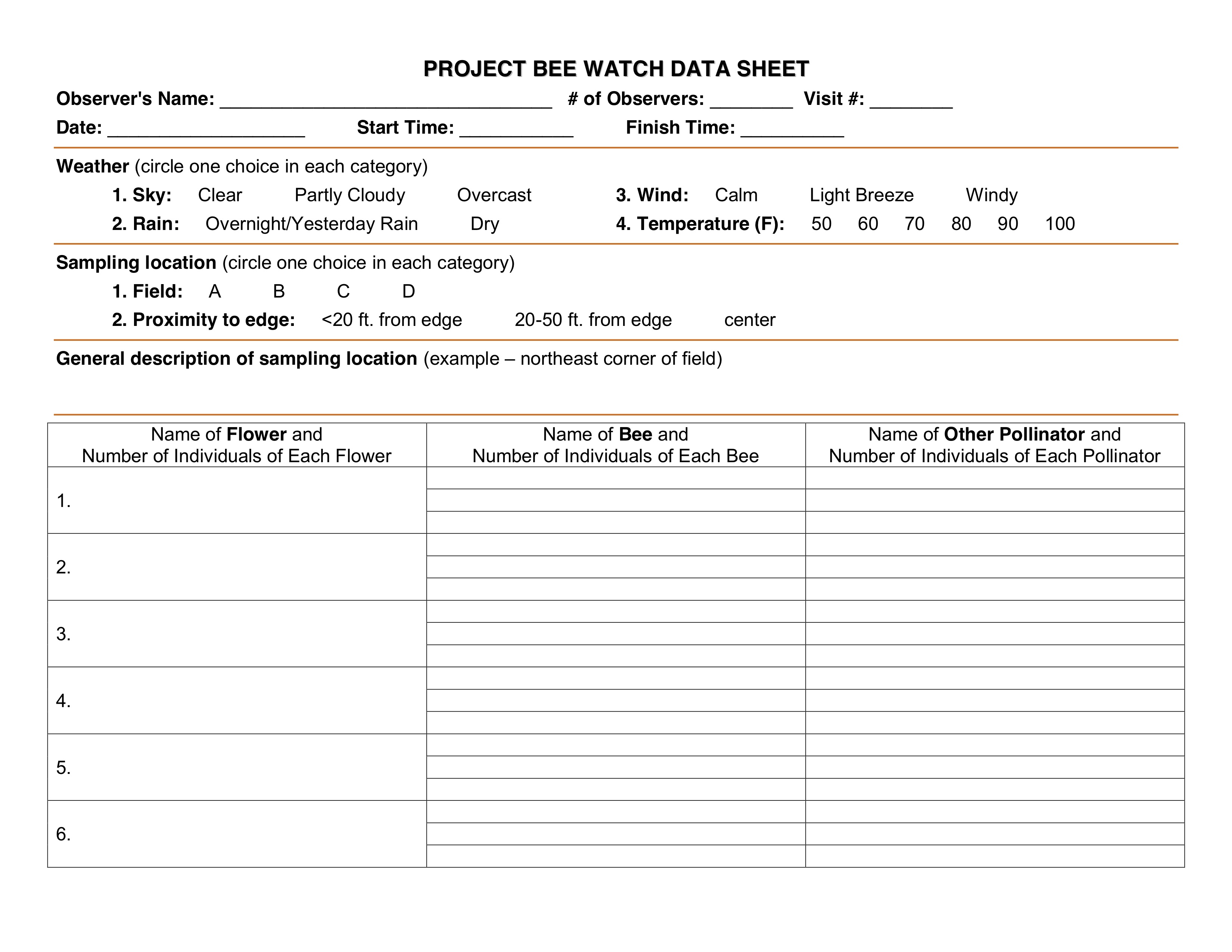Methods
Summary
Volunteers all graduate from a 2-hour Project Bee Watch training where they are taught the benefits of pollinators, how to use insect and plant identification tools, and the methods of conducting a survey at their meadow site. Click here to view the full Project Bee Watch Citizen Scientist Manual.
How do we survey bees?
Citizen Scientists conduct surveys of bees and other pollinators using a stationary method of observation. Upon arriving at a sampling location, volunteers sit either in a chair or on the ground. It is important to not move around for the next 15 minutes. Walking around the sampling area, waving your arms or sitting and standing repetitively will scare the pollinators away.
Once a sampling location is chosen, a sampling grid is placed on the ground. The grid measures 3.3 feet by 3.3 feet (1 m2). Each time a survey is conducted, individuals must commit exactly 15 minutes to sitting and recording flowers and pollinators. Volunteers complete the data sheet below for each survey and send the results to Point Park University.

Protocols
This project has not yet shared any protocols.